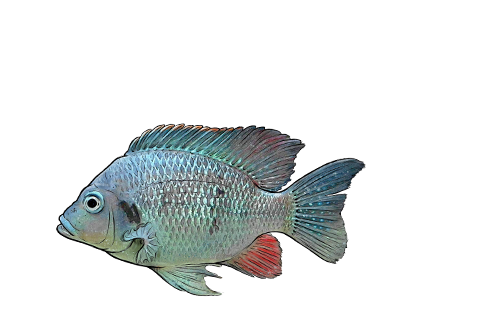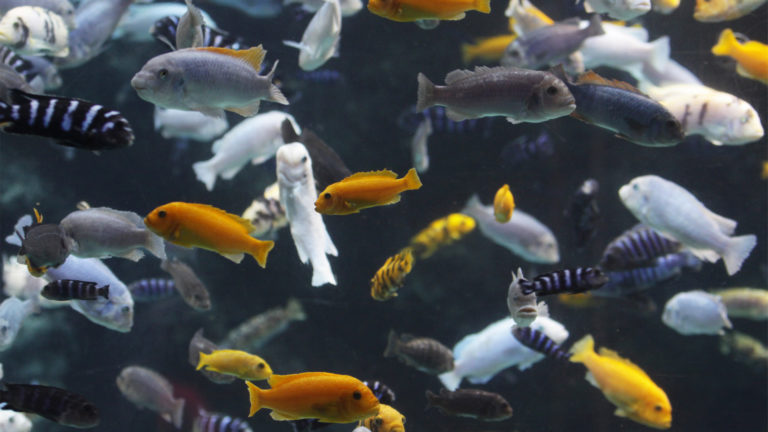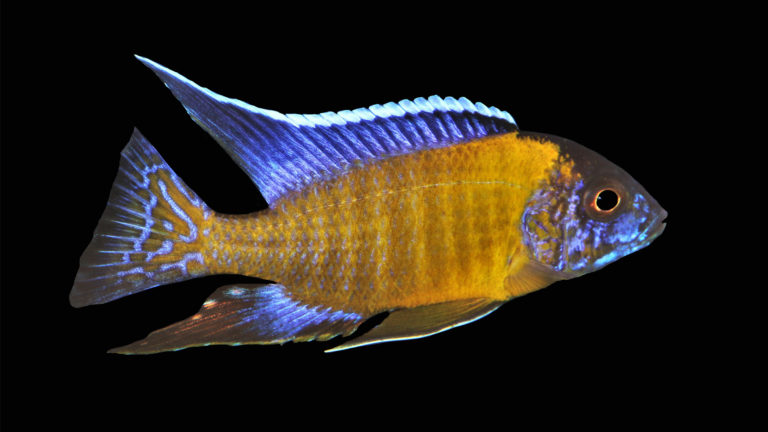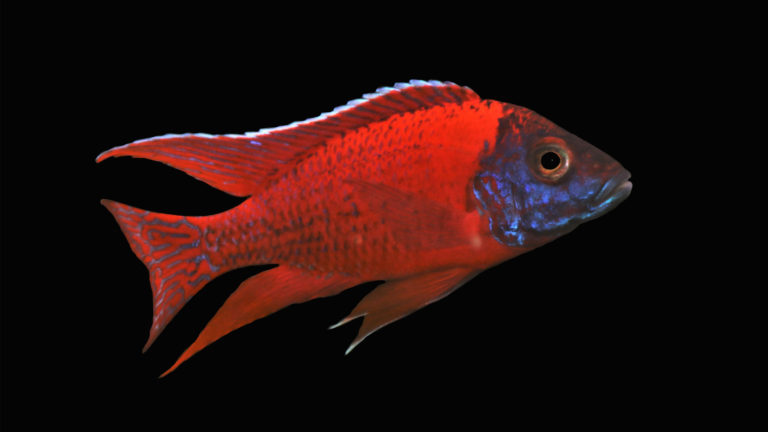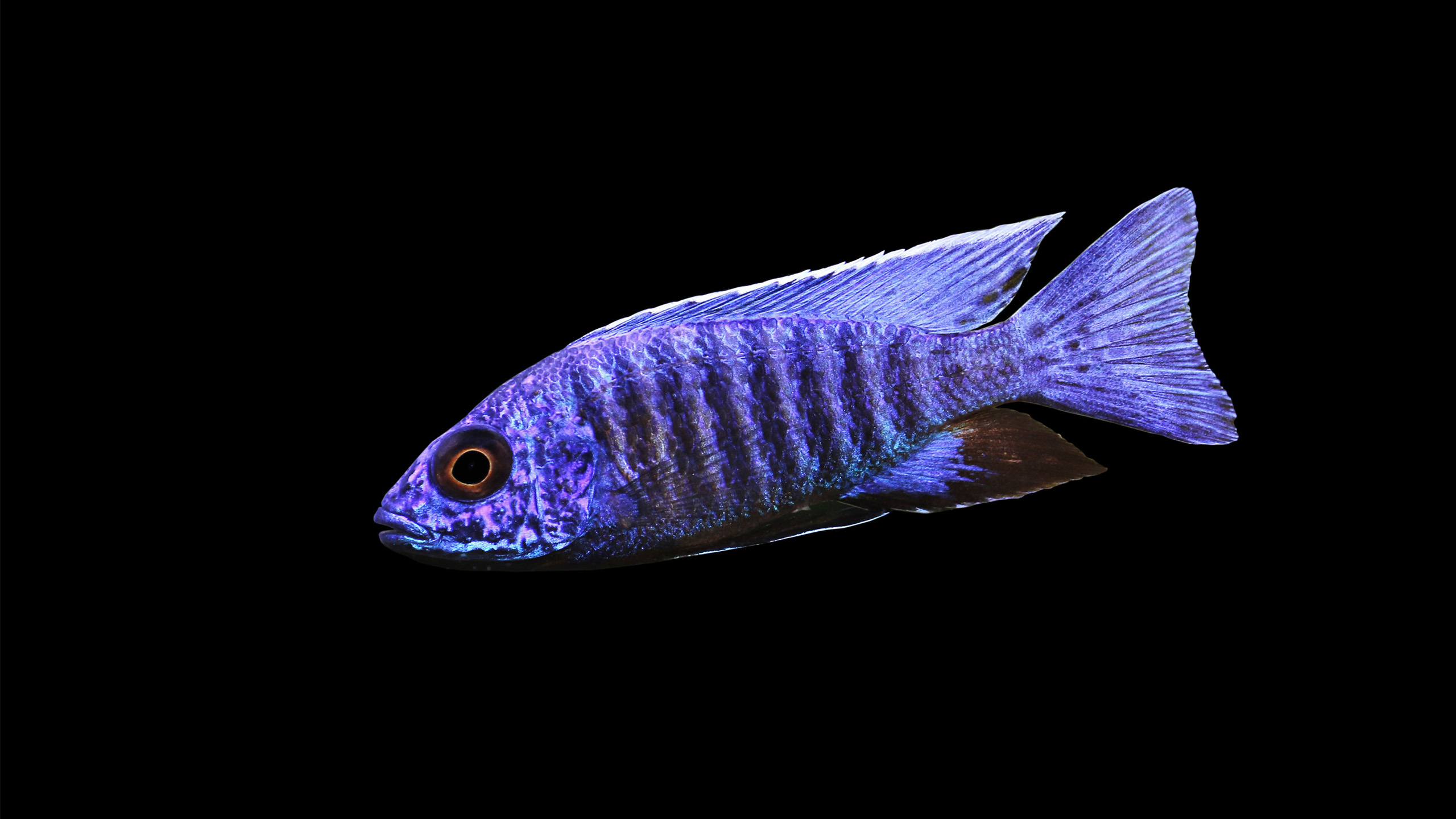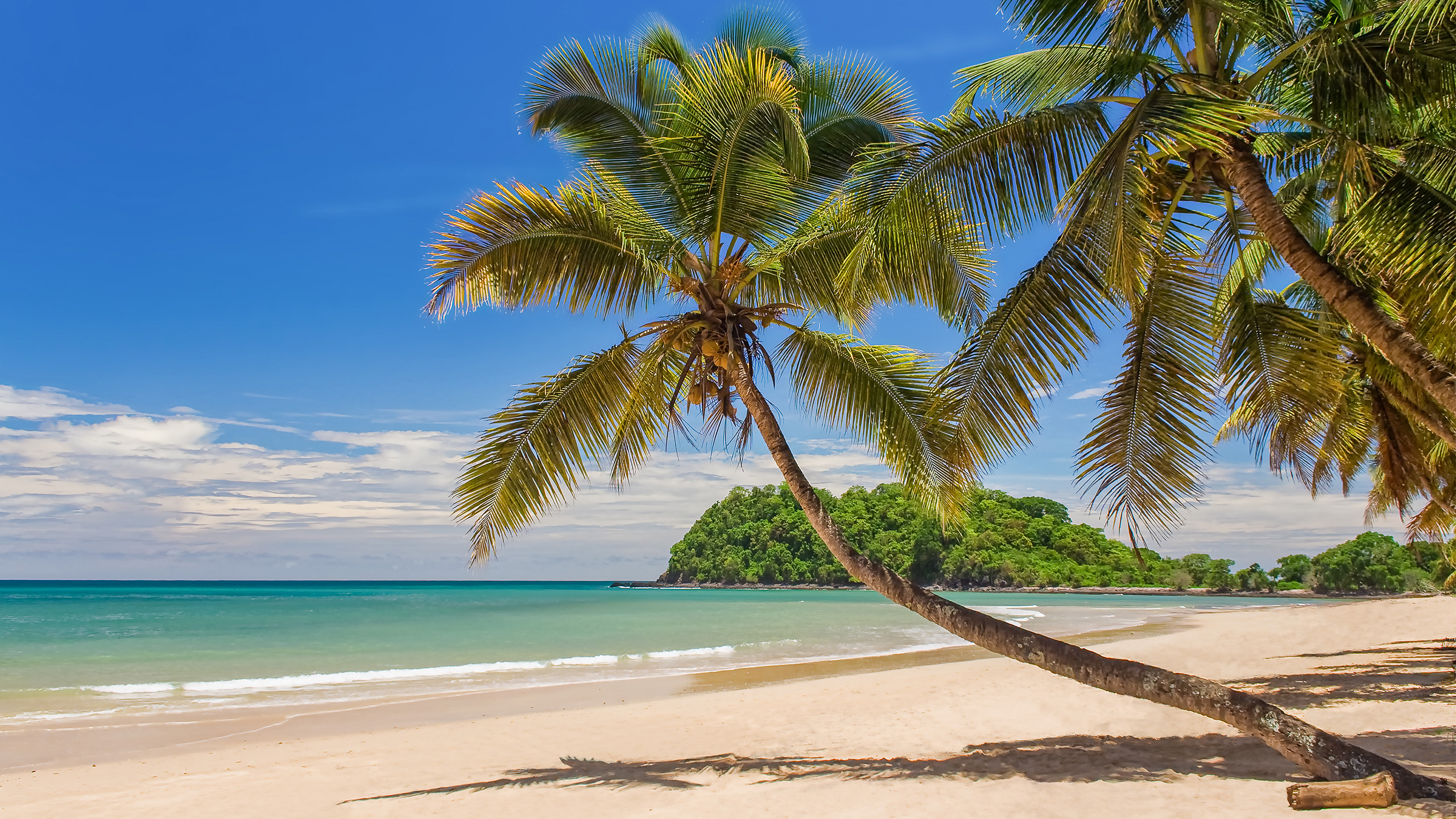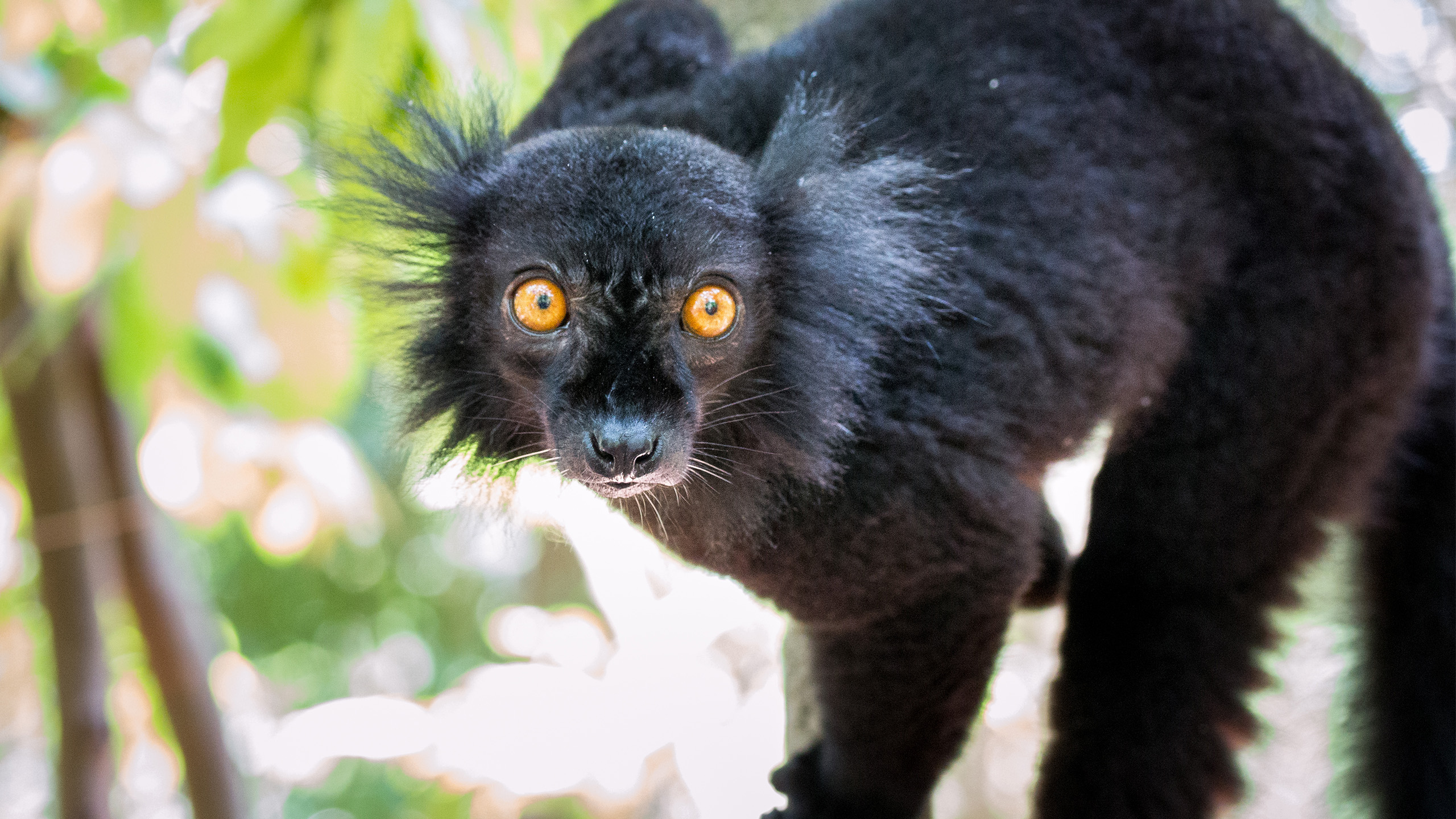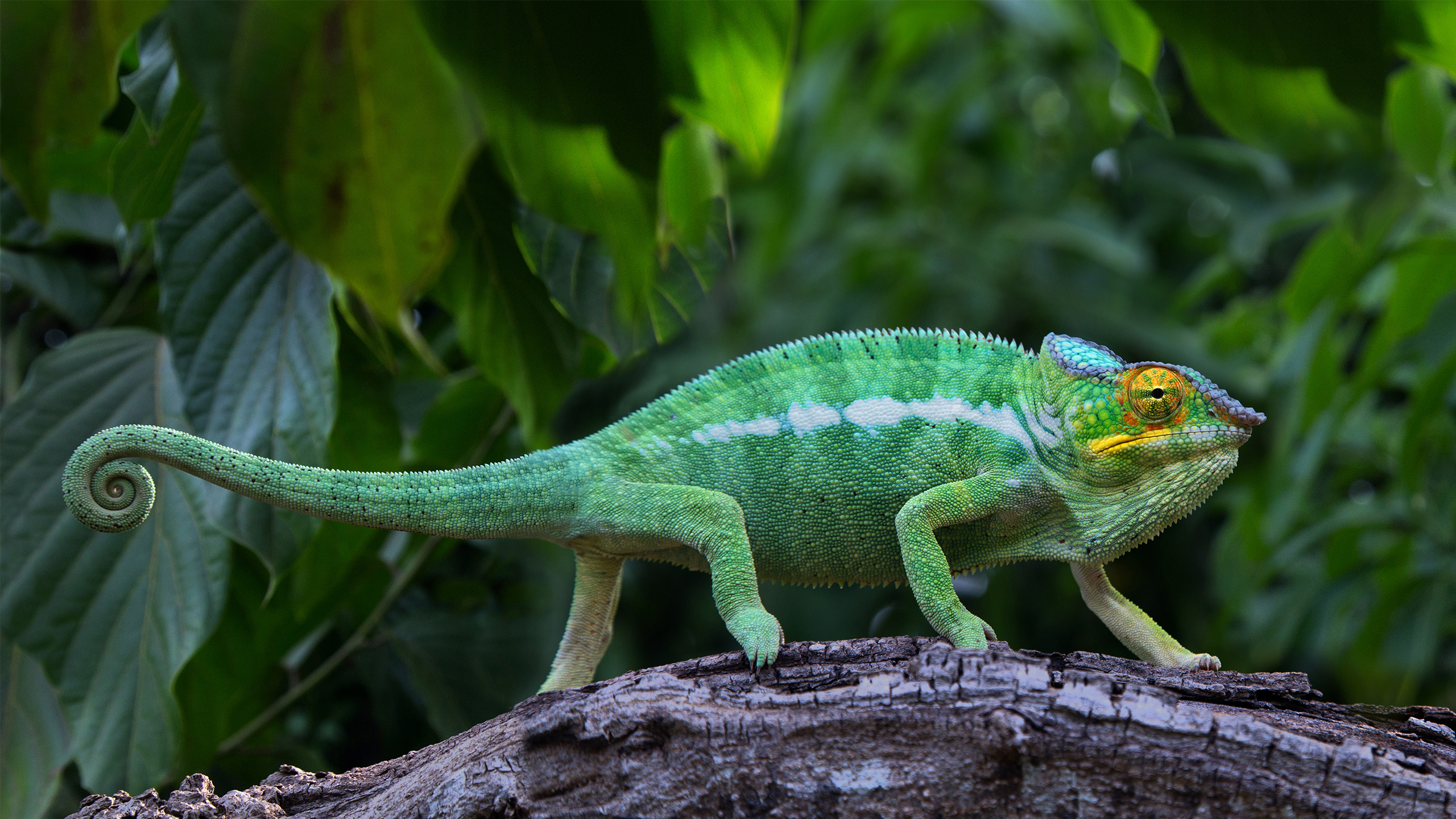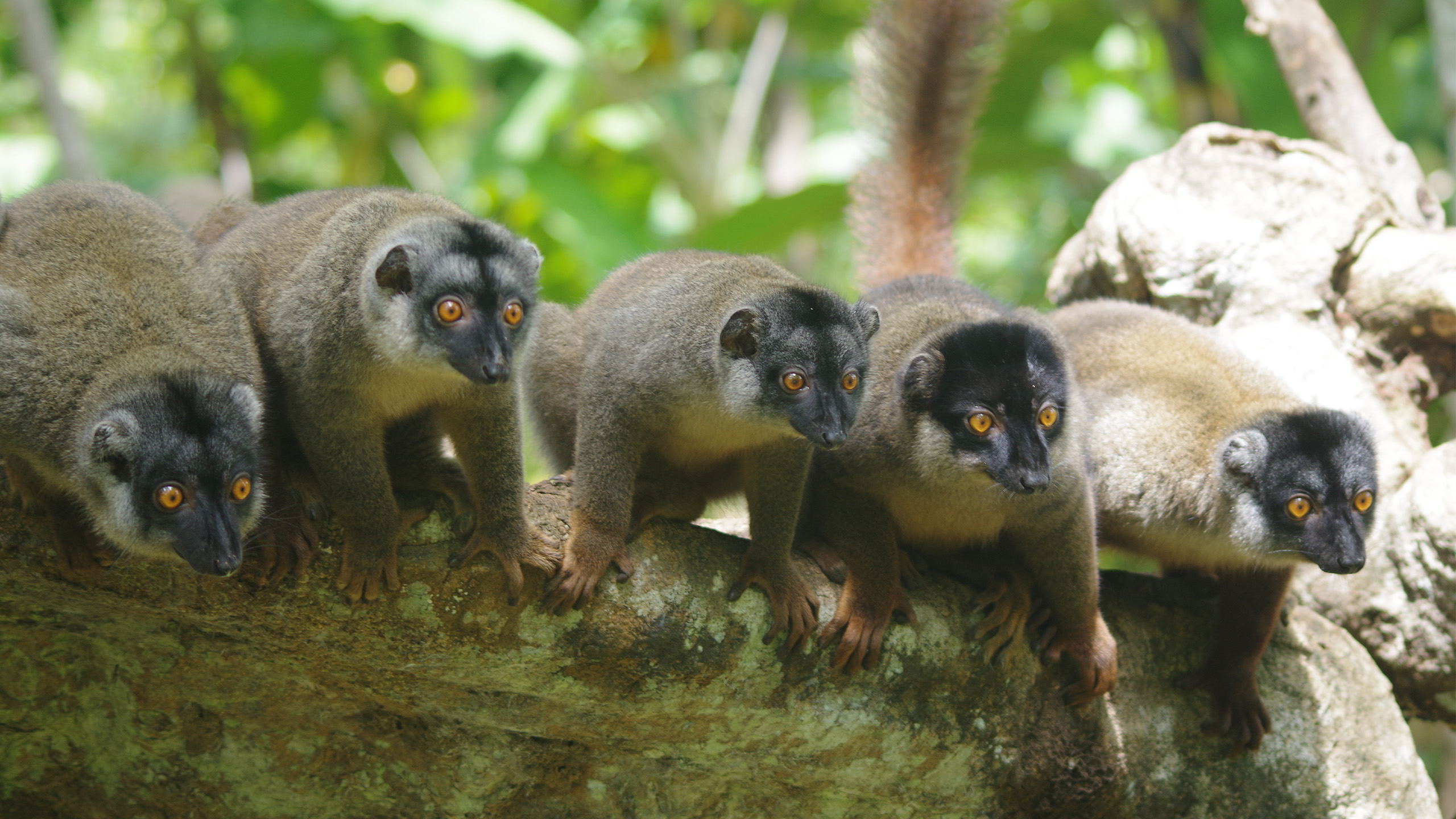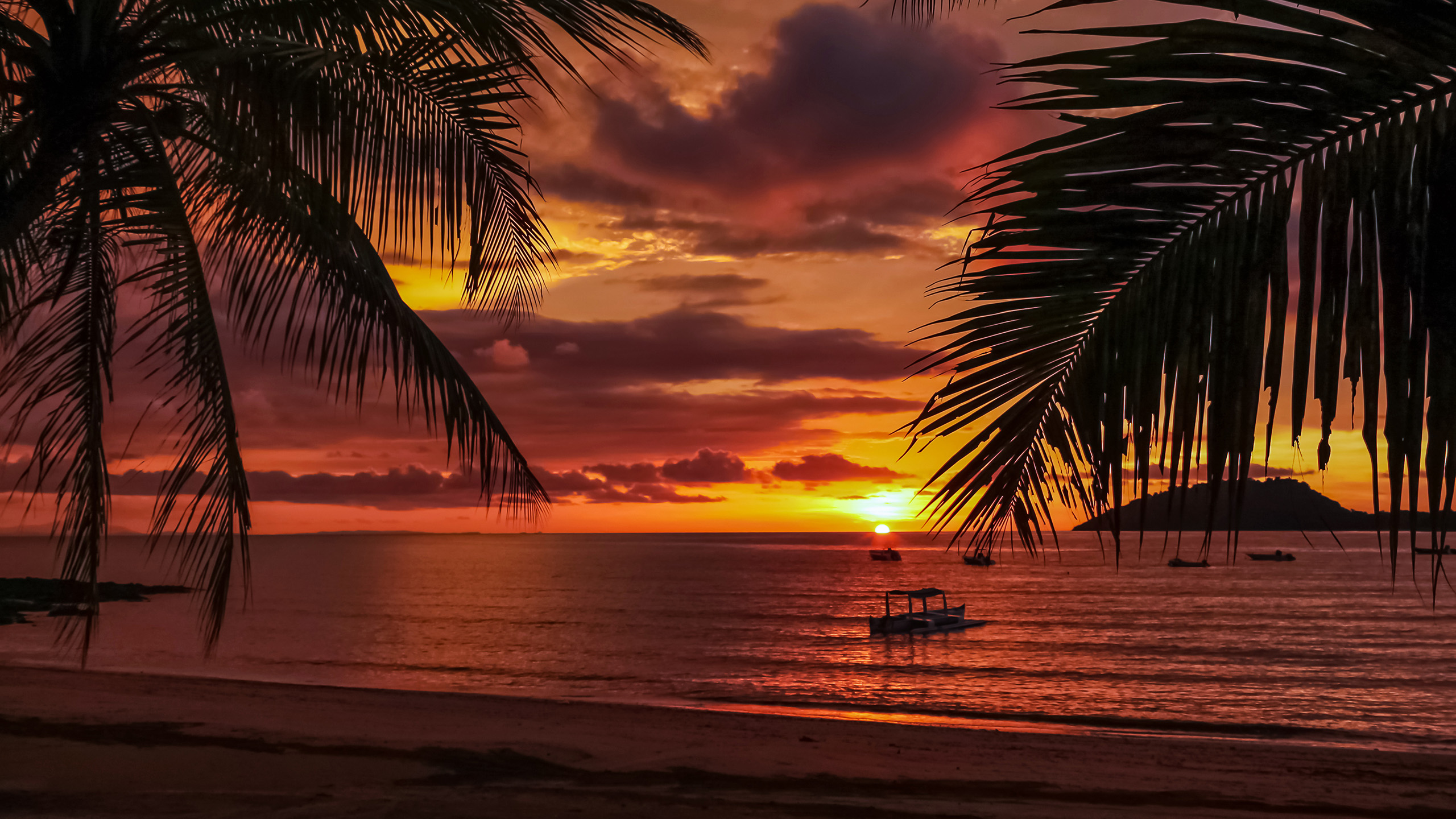Nosy-Be-Buntbarsch
Ptychochromis oligacanthus
Nosy-Be-Buntbarsch
Ptychochromis oligacanthus
Zielvorgabe CC
16 Haltende
Stand 11/2025
Zielvorgabe CC
192 Tiere
Stand 11/2025
Zielvorgabe CC
16 Haltende
Stand 11/2025
Zielvorgabe CC
192 Tiere
Stand 05/2025
Nehmen wir nur mal den ostafrikanischen Tanganijkasee: reichliche 250, nur dort vorkommende Buntbarscharten schwimmen in diesem einen Gewässer herum. Im nicht allzu weit entfernten Malawisee sind es über 400, im Viktoriasee sogar geschlagene 500. Der Artenreichtum der Fischfamilie Chichlidae in afrikanischen Gewässern ist schier atemberaubend. Wie konnte es dazu kommen? Für Evolutionsbiologen ist das eine extrem spannende Frage.
Hochleistungsevolution
Artenbildung auf Speed
Besonders auffällig ist das Tempo, mit dem sich in den afrikanischen Seen unterschiedliche Arten gebildet haben. Im Viktoriasee etwa lief das in einem erdgeschichtlichen Wimpernschlag ab. Nur 15.000 Jahre hat es gedauert, bis dort 500 völlig verschiedene Arten entstanden waren, die es nirgendwo sonst auf der Welt gibt. Adaptive Radiation nennen Biologen so etwas. Die Vorgänger der heutigen Buntbarsche sind in die neu entstandenen Seen vorgedrungen und fanden dort paradiesische Bedingungen vor – nämlich praktisch keine Konkurrenz. Also besetzten sie blitzschnell jede verfügbare Nische. Und damit sie sich dabei nicht in die Quere kamen, spezialisierten sie sich und bildeten unterschiedliche Farben, Muster, Ernährungs- und Fortpflanzungsstrategien aus. Jedem Fischchen sein Pläsierchen.
Schutzraum Nosy Be
Ruhepol Madagaskar
Auf Madagaskar dagegen lief die Sache anders. Auf dem ganzen riesigen Inselkontinent sind es gerade mal knapp 40 Buntbarsche. Interessanterweise stehen sie entwicklungsgeschichtlich ziemlich weit unten an der Wurzel des fröhlich wuchernden Buntbarschstammbaums. Das macht die madagassischen Buntbarsche zu einem besonders wertvollen Forschungsobjekt im Vergleich zu ihren geradezu explosionsartig artenbildenden nahen Verwandten auf dem Kontinent. Leider steht zu befürchten, dass die Forschenden nicht mehr viel Zeit haben, diese evolutionsbiologischen Kleinode genauer zu studieren, denn viele Buntbarsche Madagaskars stehen vor dem Aussterben. Praktisch alle madagassischen Chichliden sind gefährdet, stark gefährdet oder sogar schon von der Ausrottung bedroht – sofern man das überhaupt weiß, denn bei vielen Arten fehlen dazu Daten. Nicht so beim Nosy-Be-Buntbarsch. Von ihm weiß man schon, dass er stark gefährdet ist. Er lebt im Nordwesten von Madagaskar, wo seine Heimatgewässer allerdings massiv beeinträchtigt worden sind durch großflächige Entwaldung und folgende Erosion, die zu einer massiven Verschlammung und Verschlechterung der Wasserqualität führte. Sofern das Wasser nicht gleich zur Bewässerung komplett entnommen wird. Entsprechend schlecht sieht es für die Art dort aus.
Dass dieser Buntbarsch auf der Roten Liste „nur“ als „stark gefährdet“ geführt wird, verdankt er einem besonderen Umstand: seinem Vorkommen auf Nosy Be
Die Kraterseen von Nosy Be sind die Heimat des Nosy-Be-Buntbarschs © Pierre-Yves Babelon
Von Krokodilen bewacht
Dass der Nosy-Be-Buntbarsch auf der Roten Liste „nur“ als „stark gefährdet“ geführt wird, verdankt er einem besonderen Umstand. Er kommt nämlich, wie der Name ahnen lässt, auch auf der vorgelagerten Insel Nosy Be vor, wo er in den noch weitgehend ungestörten Kraterseen herumschwimmt. Dass die Situation dort deutlich besser ist, liegt einerseits an der traditionelleren Lebensweise der Menschen auf Nosy Be, andererseits aber auch an der traditionellen Lebensweise der dort in hoher Dichte vorkommenden Nilkrokodile. Das sorgt dafür, dass viele Menschen lieber auf Distanz bleiben. Inzwischen sind die Kraterseen Teil eines Schutzgebiets. Das nutzt nicht nur den Nosy-Be-Buntbarschen, sondern auch vielen anderen einheimischen Arten.
Nosy-Be-Buntbarsch © Thomas Ziegler
Der See
Aquarien werden mitunter auch als „See im Glase“ bezeichnet, und dementsprechend versucht Citizen Conservation, die Zahl der Seen, in denen der Nosy-Be-Buntbarsch eine sichere Zuflucht findet, deutlich zu erhöhen. Ausgehend vom Kölner Zoo, der die Barsche in seinem Programm für gefährdete madagassische Süßwasserfische betreut und züchtet, sollen viele weitere Haltungen auch bei privaten Aquarianern etabliert werden, um eine stabile Population in Menschenhand als Sicherheitskopie aufzubauen. Damit demnächst nicht allein Krokodile über diese urigen Vertreter einer der evolutionsbiologisch spannendsten Tiergruppen des Planeten wachen.
Für Halter
Basisinformationen zu Biologie und Haltung
Der Nosy-Be-Buntbarsch ist eine gut zu pflegende madagassische Buntbarschart, die jedoch innerartlich aggressiv reagieren kann. Zur Haltung einer Gruppe von ca. 8 adulten Exemplaren eignen sich Aquarien von mindestens 1,5 m Länge und 500 l Wasservolumen. Gute Erfahrungen bei Haltung und Zucht wurden bislang mit folgenden Werten gemacht: Temperatur 24 – 25 °C, Karbonathärte 3° dH (KH), GH 5, 230 Mikrosiemens, 7,5 pH. Als Futter eignet sich: Handelsübliches Flockenfutter; Frostfutter (Weiße, Schwarze und Rote Mückenlarven und Bachflohkrebse); Lebendfutter (Artemien, Weiße Mückenlarven).
